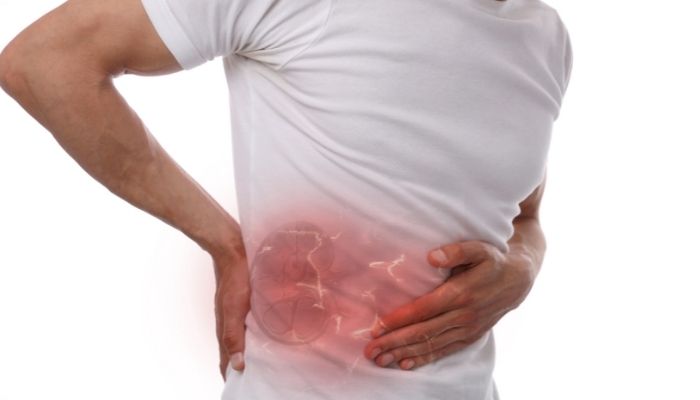People who are suffering from kidney problems have weakened renal function. Because their kidneys can’t process potassium efficiently, and thus, it gets accumulated in their blood. If too much potassium gets stored in your blood, this can be life-threatening. To treat kidney disease, doctors often recommend some medications that will uplift the level of potassium. If your body has excessive levels of potassium, you may feel fatigued or nauseous. If the potassium level spikes abruptly, you may experience breathing difficulties, chest pain, or heart palpitations. This condition is called hyperkalemia, which demands extensive medical care.
The best way to manage your potassium level is by making some dietary changes. Here, we are going to mention the list of high potassium foods to avoid if you have renal problems.
How Much Potassium Is Safe?
Healthy men and women over the age of 19 must consume at least 3,400 mg and 2,600 mg of potassium per day, respectively. But people with chronic kidney disease (CKD) should restrict their potassium intake below 2,000 mg per day.High Potassium Foods to Avoid during Kidney Disease
Let’s take a look at the list of high potassium foods to avoid if you have kidney disease.1. Potatoes
A plain baked potato contains 925 mg of potassium. Potatoes also contain higher levels of potassium, even in other forms. French fries contain 470 mg of potassium per 3 oz. serving, and just one ounce of potato chips contains 465 mg of potassium. Sweet potatoes are also rich in potassium. One baked sweet potato contains 450 mg of potassium. Instead of potatoes, you can even take white bread and white rice which contain (both) less than 100 mg of potassium per serving.2. Bananas
Many people are not aware that bananas are a potassium-rich food. This is the reason why athletes consume so many bananas. If your potassium levels are high, you should stay away from bananas till your level comes down. You can consume low-potassium food items like apples, blueberries, raspberries, grapes, lemons, and limes.3. Milk
Milk is rich in potassium even low-fat or fat-free milk contains higher levels of potassium. To avoid potassium, you should drink only water. Though coffee and popular low-potassium beverages, you should be very careful regarding how much you are drinking. One cup of black coffee contains 116 mg of potassium. So, don’t drink more than two cups per day.Milk-based products including yogurt, cream cheese, and ice cream are also high in potassium. Discard all these products; rather, you can take low-potassium desserts like angel food or yellow cake.
4. Oranges
One orange contains 240 mg of potassium. Orange juice is also rich in potassium. If you need to quench your fruit juice craving, you can drink apple juice instead. A half-cup of apple juice contains only 150 mg of potassium. Cranberry juice also contains a tiny amount of potassium, so consume it without any worry.5. Dried Beans and Peas
Many vegans and vegetarians prefer dried beans and peas, including lentils, navy, and kidney beans, to fulfill their daily protein requirements. But these protein-rich foods contain a high amount of potassium. You must be astonished to know that beans and peas contain more potassium per serving, than beef, chicken, or fish. A half-cup of lentils contains 365 mg of potassium, while 3 oz. of fish has approximately 300 mg of potassium.6. Winter Squash
Winter squashes, including Acorn and Hubbard squash, contain a lot of potassium. One cup of serving contains 250 mg of potassium. Pumpkins are also rich in potassium. If your potassium level is on the higher side, you should discard the pumpkin pie and pumpkin bread. You can take summer squashes like yellow squash and zucchini but in less than one cup.7. Spinach
Though leafy green vegetables are healthy for you, if your potassium level is high, discard the spinach. Half-cup spinach contains 420 mg of potassium. Beet greens and Bok choy also contain a higher amount of potassium.One cup of lettuce contains about 100 mg of potassium, so you can consume it in a limited way. To eat salads, you can garnish your dish with alfalfa sprouts, cucumbers, broccoli, and celery. All these contain a lower amount of potassium.
8. Salt Substitute
People who are suffering from kidney or heart disease often use salt substitutes to cut down the amount of sodium in their diets. If your sodium levels are high, you should use salt substitutes that are available in the market. These days, the markets are flooded with potassium chloride to mimic the taste of sodium chloride.Also Read: 10 Tips for Natural Home Remedies for Kidney Stones
Low-Potassium Foods to Add
Low-potassium foods are the best choice for people with chronic kidney disease. According to the American Kidney Foundation, a potassium-deficit diet only permits consumption of 2000 mg of potassium daily. If you have kidney disease, your renal dietician will design a specific diet chart for you. A plethora of food items are available in the market that is low in potassium. A half-cup is the recommended per serving size. Don’t consume more than the recommended amount as it may enhance the level of your potassium abruptly.Low-potassium foods include:
- Apples, apple juice, and applesauce
- Berries including blackberries, blueberries, strawberries, and raspberries
- Grapes and grape juice
- Pineapple and pineapple juice
- Watermelon
- Asparagus
- Broccoli
- Carrots
- Kale
- Cabbage
- Cucumbers
- White rice, noodles, and bread (not whole grain)
- Zucchini and yellow squash



